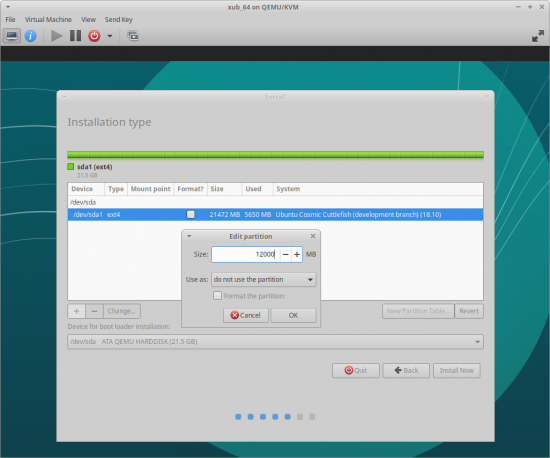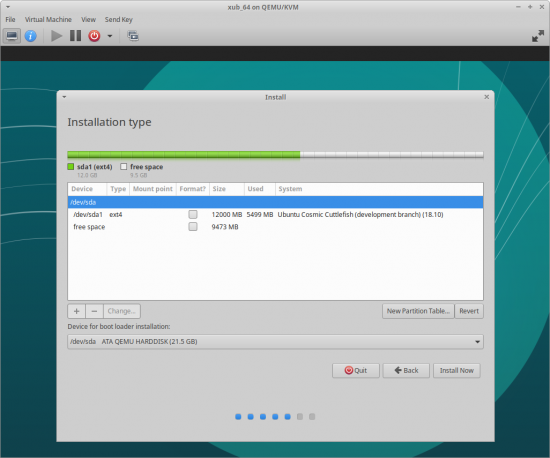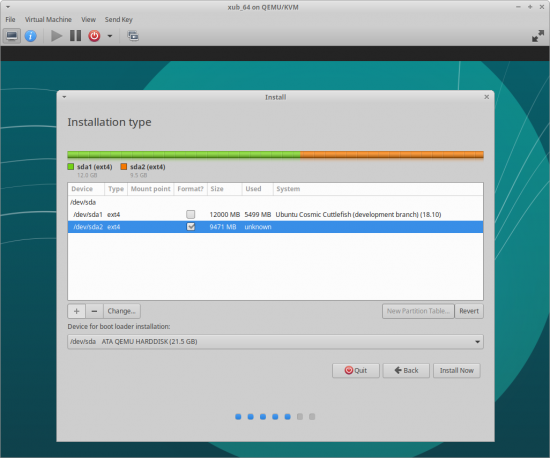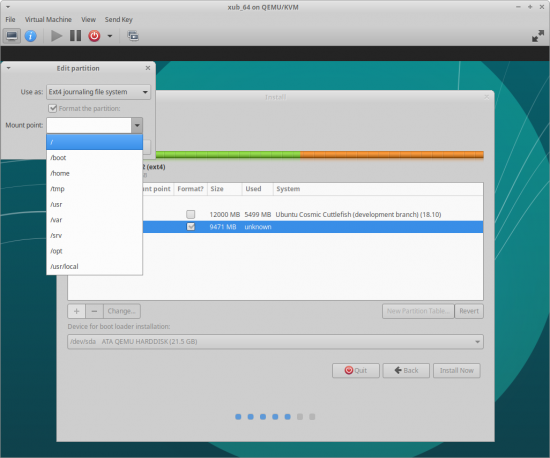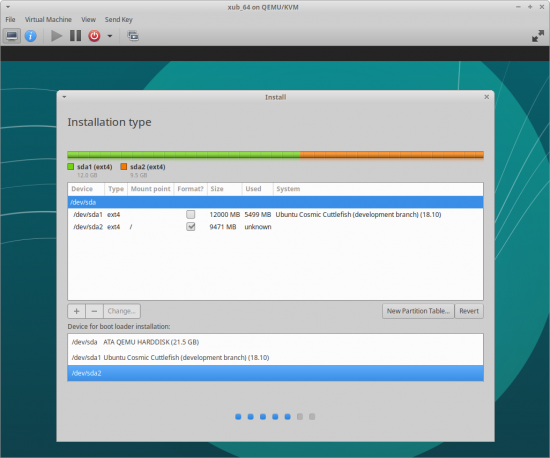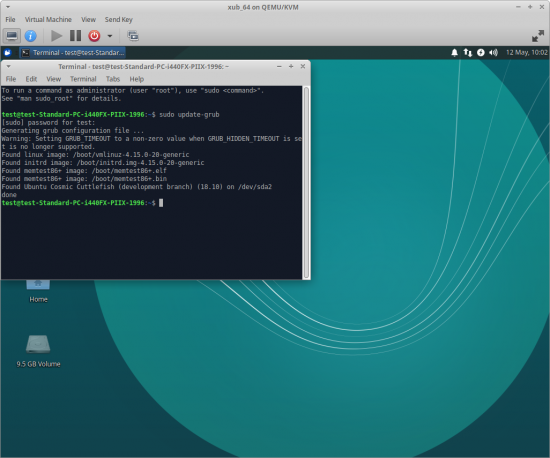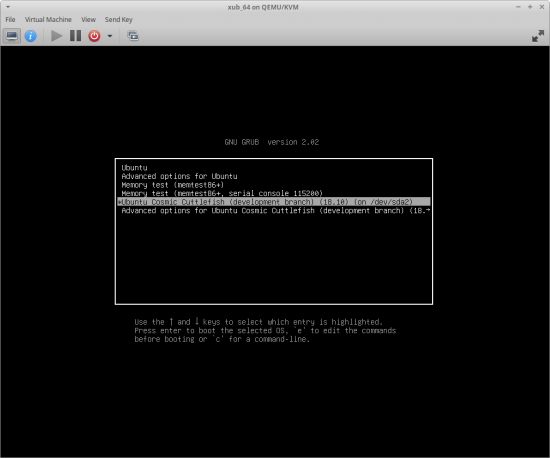ParseError: syntax error, unexpected 'include' (T_INCLUDE), expecting identifier (T_STRING) or '{'
More info is available in the error log.
This is an old revision of the document!
Fine tuning your development setup
Manual Partitions and Bootloader location
If you have more than one installation on your system, often the autoresize option won't be available. Or you want control over where your new install goes. Use the Something Else option and you will be shown a list of disks and partitions on your system, with any unallocated space shown as such.
You can create partitions or edit existing partition sizes until you have a new partition available to install too.
The following runs through using the installer to create a new partition and then install to it.
Once at the Something Else window, select the existing partition you wish to resize and then the Change button - set the partition size you wish to keep for this partition.
Now, select the resulting freespace
Press the + button to create your new partition
Now you can use the Change button to set the mount point for your new installation.
Once you have done that you can continue with your installation using your new partition.
In this scenario - grub (the bootloader) will be installed to the disk from your new installation.
There are times when this is not what you want. If for instance you are resizing your main install and want that to keep control of your bootloader.
This can be done by changing the bootloader device.
Press Device for bootloader installation and a drop down will appear showing your available partitions. Choose the device which corresponds to the installation, in this example /dev/sda2 and then continue the installation
Once the installation has finished you can reboot as is normal, however in this case there is no way yet to boot into your new installation as your main bootloader doesn't know about it yet.
Login to your main installation, open a terminal and run this command (this updates Grub and finds all systems it can boot)
sudo update-grub
Reboot the machine again and your new installation will now be available in Grub.
Adding an ISO to Grub
Sometimes you might find it easier to have the development ISO available as an option in your Grub menu.
This will work just like booting the ISO on a USB except all you can do is run the live session - on your hardware - without being able to install it.
To do this you need to copy your ISO somewhere that it can be found by grub.
The following are examples of the setup a member of the QA Team uses.
They keep their ISO in /boot/grubiso - a folder they created for this purpose.
To allow for the functionality, you need to edit a system file - /etc/grub.d/40_custom. To edit the file, Alt+F2 then use this command to edit the file as root pkexec mousepad /etc/grub.d/40_custom
It is important that the default top lines of this file are not changed.
The following content works for the QA member because, the location of the ISO file (grubiso) and the hard drive setting (hd0,5) are correct for them. You need to input your ISO location and hd setting. The remaining parts should then work for you.
They have 2 options available on their grub menu, one boots the ISO directly, the second loads the ISO into RAM and then boots from there.
menuentry "Cosmic Cuttlefish 64" {
set isofile="/boot/grubiso/xubuntu-cosmic-desktop-amd64.iso"
loopback loop (hd0,5)$isofile
linux (loop)/casper/vmlinuz.efi boot=casper iso-scan/filename=$isofile noprompt noswap noeject
initrd (loop)/casper/initrd.lz
}
menuentry "Cosmic Cuttlefish 64 ram" {
set isofile="/boot/grubiso/xubuntu-cosmic-desktop-amd64.iso"
loopback loop (hd0,5)$isofile
linux (loop)/casper/vmlinuz.efi toram maybe-ubiquity boot=casper iso-scan/filename=$isofile noprompt noswap noeject
initrd (loop)/casper/initrd.lz
}
Once the file has been edited and saved, you must update grub to include your new ISO options, sudo update-grub, when you reboot you should now see them on your Grub menu

